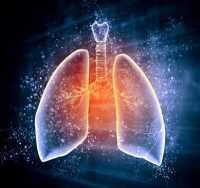Work-related Asthma
Asthma Research

Research is needed to provide further knowledge that contributes to the prevention of work-related asthma. The links on this page provide access to various resources for work-related asthma.
The link for “Prevention of Occupational Asthma Research” provides access to a searchable, annotated bibliography of 140 articles that describe 142 primary or secondary occupational asthma prevention activities, complete with summaries of relevant methods and findings. The articles have been indexed and you can search by type of intervention or agent, or conduct an advanced query using five different features of the studies.
The link for “Workplace Exacerbation of Asthma Research” highlights the research conducted by NIOSH to better understand work-exacerbated asthma (sometimes known as work-aggravated asthma), which describes existing asthma that worsens because of worksite exposures to irritants, allergens, or physical conditions. Work-exacerbated asthma is one of the two main categories of work-related asthma, the other being occupational asthma, which describes asthma caused by worksite exposures. NIOSH has been a leader in research on work-exacerbated asthma, and this link provides a list of articles, book chapters, and an educational unit produced by NIOSH staff.
Additional links provide information about work-related asthma under the headings of Surveillance, Morbidity and Mortality Weekly Reports (MMWRs), NIOSH Publications, NIOSHTIC-2 Search, Other Related Resources, and References.
Resources & References
Surveillance
The Work-Related Lung Disease Surveillance Report
It presents up-to-date summary tables, graphs, and figures of occupationally-related respiratory disease surveillance data on the pneumoconioses, occupational asthma and other airways diseases, and several other respiratory conditions.
- Section 9, Asthma
-
Appendix H, Work-Related Asthma Surveillance Guidelines
Surveillance guidelines for State health departments on work-related asthma.
Morbidity and Mortality Weekly Reports (MMWRs)

- Mold Prevention Strategies and Possible Health Effects in the Aftermath of Hurricanes and Major Floods (June 9, 2006)
- Forecasted State-Specific Estimates of Self-Reported Asthma Prevalence – United States, 1998(http://wwwdev.cdc.gov/mmwr/preview/mmwrhtml/00055803.htm) (December 4, 1998)
- Self-Reported Asthma in Adults and Proxy-Reported Asthma in Children – Washington, 1997-1998 (October 15, 1999)
- Surveillance for Occupational Asthma – Michigan and New Jersey, 1988-1992.
- Surveillance for Asthma – United States, 1960-1995(http://wwwdev.cdc.gov/mmwr/preview/mmwrhtml/00052262.htm) (April 24, 1998)
- Surveillance of Work-Related Asthma in Selected U.S. States Using Surveillance Guidelines for State Health Departments – California, Massachusetts, Michigan, and New Jersey, 1993-1995 (June 5, 1999)
NIOSH Publications

Preventing Asthma and Death from MDI Exposure During Spray-on Truck Bed Liner and Related Applications
DHHS (NIOSH) Publication No. 2006-109 (September 2006)
This Alert summarizes four case reports: one death and several incidents of asthma or other respiratory disease following exposure to MDI during spray-on truck bed lining operations.
Injury and Asthma Among Youth Less Than 20 Years of Age on Minority Farm Operations in the United States, 2000 Volume II: Hispanic National Data
DHHS (NIOSH) Publication No. 2006-109 (October 2005)
This document provides previously unavailable youth demographic, injury and asthma estimates at the national level for youth on Hispanic-operated farms in the U.S. A Hispanic is defined as any person of Spanish, Hispanic, or Latino origin.
Asthma Among Household Youth on Hispanic Farm Operations
DHHS (NIOSH) Publication No. 2004-158 (June 2004)
Asthma is the most common chronic disease of childhood. Household farm youth comprise all youth 0-19 years of age who live on the farm and include working and non-working youth. 16-19 year olds had the highest prevalence rate for having an asthma attack while doing farm work (61 asthmatics per 1,000 youth living on Hispanic farm operations).
Asthma Among Household Youth on Minority Farm Operations
DHHS (NIOSH) Publication No. 2004-118 (December 2003)
In 2000, approximately 28,600 youth lived on minority farm operations. 10-15 year olds had the highest prevalence rate of asthma. Youth less than 10 years of age had the highest prevalence rate for having an asthma attack while doing farm work.
Injury and Asthma Among Youth Less Than 20 Years of Age on Minority Farm Operations in the United States, 2000; Volume I: Racial Minority National Data
DHHS (NIOSH) Publication No. 2005-147 (July 2005)
This document provides previously unavailable youth demographic, injury and asthma estimates at the national level for youth on racial minority operated farms in the United States. These data represent the initial step in developing research and prevention programs to reduce the burden of injury and asthma on racial minority farms in the United States.
Preventing Allergic Reactions to Natural Rubber Latex in the Workplace
DHHS (NIOSH) Publication No. 97-135 (June 1997)
En Español
NIOSH Alert: Workers exposed to latex gloves and other products containing natural rubber latex may develop allergic reactions such as skin rashes; hives; nasal, eye, or sinus symptoms; asthma; and (rarely) shock.
Preventing Asthma and Death from Diisocyanate Exposure
DHHS (NIOSH) Publication No. 96-111 (1996)
En Español
NIOSH Alert: Workers exposed to diisocyanates may develop serious or fatal respiratory disease.
Preventing Asthma in Animal Handlers
DHHS (NIOSH) Publication No. 97-116 (January 1998)
En Español
Exposure to animals or animal products in the workplace can cause asthma and allergies.
NIOSHTIC-2 Search
NIOSHTIC-2 Search Results on Asthma and Allergies
NIOSHTIC-2 is a searchable bibliographic database of occupational safety and health publications, documents, grant reports, and journal articles supported in whole or in part by NIOSH.
Other Related Resources
“Employees, Employers, and Worksites“
National Institutes of Health page providing asthma guidance for employers and employees.
“Talking with You Physician“
Factsheet Information provided by the Occupational Safety and Health Administration (OSHA) on asthma.
A Descriptive Study of Work-Aggravated Asthma
Allergy Society of South Africa (ALLSA)
Links to allergy news and journals, allergy database, more…
American Academy of Allergy Asthma & Immunology (AAAAI)
Information for patients and professionals. Includes reports, pollen counts, more…
American College of Allergy, Asthma & Immunology (ACAAI)
Asthma Management Model System
National Heart, Lung, and Blood Institute (NHLBI), National Asthma Education and Prevention Program (NAEPP) website
ATSDR: Case Studies in Environmental Medicine (CSEM) Environmental Triggers of Asthma
One in a series of self-instructional publications designed to increase the primary care providers knowledge of hazardous substances in the environment and to aid in the evaluation of potentially exposed patients.
CDC Topic Page: Asthma and Allergies
CDC Topic Page: Healthy Youth! Health Topics Asthma
NCEH Air Pollution and Respiratory Health Program
National Institutes of Allergy and Infectious Diseases (NIAID)
Topic Page on Allergic Diseases
National Institutes of Allergy and Infectious Diseases (NIAID)
Topic Page on Asthma
Work-related reactive airways dysfunction syndrome cases from surveillance in selected U.S. states.
J Occup Environ Med. 2003 Apr;45(4):360-8, NLM website
References
ATSDR (Agency for Toxic Substances and Disease Registry) [2016]. Environmental health and medicine education: taking an exposure history [http://www.atsdr.cdc.
gov/csem/csem.asp?csem=33&po=0]. Date accessed” February 2017.
AOEC (Association of Occupational and Environmental Clinics) [2012]. Exposure code lookup [http://www.aoecdata.org/ExpCodeLookup.aspx]. Date accessed:
February 2017.
CDC (Centers for Disease Control and Prevention) [2017]. Adult immunization schedule [http://www.cdc.gov/vaccines/schedules/hcp/adult.html]. Date accessed:
February 2017.
CDC [2017]. Smoking & tobacco use [http://www.cdc.gov/tobacco/index.htm]. Date accessed: February 2017.
Cockcroft D, Davis B [2009]. Direct and indirect challenges in the clinical assessment of asthma. Ann Allergy Asthma Immunol 103(5):363-369.
Dweik RA, Boggs PB, Erzurum SC, Irvin CG, Leigh MW, Lundberg JO, Olin AC, Plummer AL, Taylor DR; American Thoracic Society Committee on Interpretation of
Exhaled Nitric Oxide Levels (FENO) for Clinical Applications [2011]. An official ATS clinical practice guideline: interpretation of exhaled nitric oxide levels (FENO) for
clinical applications. Am J Respir Crit Care Med 184(5):602-615.
Hankinson JL, Odencrantz JR, Fedan KB [1999]. Spirometric reference values from a sample of the general U.S. population. Am J Respir Crit Care Med 159(1):179-187.
Miller MR, Hankinson J, Brusasco V, Burgos F, Casaburi R, Coates A, Crapo R, Enright P, van der Grinten CP, Gustafsson P, Jensen R, Johnson DC, MacIntyre N, McKay R, Navajas D, Pedersen OF, Pellegrino R, Viegi G, Wanger J, ATS/ERS Task Force [2005]. Standardisation of spirometry. Eur Respir J 26(2):319-338.
National Heart, Lung, and Blood Institute, National Asthma Education and Prevention Program. Expert Panel Report 3: guidelines for the diagnosis and management of asthma. Summary report 2007 [http://www.nhlbi.nih.gov/health-pro/guidelines/current/asthma-guidelines/full-report]. Date accessed: November 2016.
NIOSH (National Institute for Occupational Safety and Health) [2011]. OSHA-NIOSH Info Sheet: Protect yourself – spirometry breathing test. Morgantown, WV:
U.S. Department of Health and Human Services, Centers for Disease Control and Prevention, DHHS (NIOSH) Publication No. 2011-132 [http://www.cdc.gov/niosh/
docs/2011-132/]. Date accessed: February 2017.
NIOSH [2011]. OSHA – NIOSH Info Sheet: Maximize your spirometry screening and surveillance resources. Morgantown, WV: U.S. Department of Health and
Human Services, Centers for Disease Control and Prevention, DHHS (NIOSH) Publication No. 2011-133 [http://www.cdc.gov/niosh/docs/2011-133/]. Date accessed: February 2017.
NIOSH [2011]. Get valid spirometry results every time. Morgantown, OH: U.S. Department of Health and Human Services, Centers for Disease Control and Prevention, DHHS (NIOSH) Publication No. 2011-135 [http://stacks.cdc.gov/view/cdc/5900/]. Date accessed: February 2017.
NIOSH [2012]. Spirometry quality assurance: Common errors and their impact on test results. Morgantown, OH: U.S. Department of Health and Human Services,
Centers for Disease Control and Prevention, National Institute for Occupational Safety and Health. DHHS (NIOSH) Publication No. 2012-116 [http://www.cdc.gov/
niosh/docs/2012-116/]. Date accessed: February 2017.
NIOSH [2015]. Health hazard evaluations (HHEs) request [http://www.cdc.gov/niosh/hhe/request.html].Date accessed: February 2017.
NIOSH [2016]. Spirometry: spirometry training program [http://www.cdc.gov/niosh/topics/spirometry/training.html]. Date accessed: February 2017.
NIOSH [2016]. Spirometry longitudinal data analysis (SPIROLA) software [http://www.cdc.gov/niosh/topics/spirometry/spirola-software.html]. Date assessed: February 2017.
OSHA (Occupational Safety and Health Administration) [2013]. Spirometry testing in occupational health programs: Best practices for healthcare providers.
Washington, D.C.: U.S. Department of Labor, Occupational Safety and Health.
OSHA 3637-03 2013 [https://www.osha.gov/Publications/OSHA3637.pdf
Oasys [2016]. The Oasys computer program [http://occupationalasthma.com/oasys.aspx]. Date assessed: February 2017.
Pellegrino R, Viegi G, Brusasco V, Crapo RO, Burgos F, Casaburi R, Coates A, van der Grinten CP, Gustafsson P, Hankinson J, Jensen R, Johnson DC, MacIntyre N, McKay
R, Miller MR, Navajas D, Pedersen OF, Wanger J [2005]. Interpretative strategies for lung function tests. Eur Respir J 26(5):948–968.
Rondón C, Campo P, Galindo L, Blanca-López N, Cassinello MS, Rodriguez-Bada JL, Torres MJ, Blanca M [2012]. Prevalence and clinical relevance of local allergic
rhinitis. Allergy. 67(10):1282-1288.
Rondón C, Bogas G, Barrionuevo E, Blanca M, Torres MJ, Campo P [2017]. Nonallergic rhinitis and lower airway disease. Allergy 72(1):24-34.
Sahay S, Gera K, Bhargava SK, Shah A [2016]. Occurrence and impact of sinusitis in patients with asthma and/or allergic rhinitis. J Asthma 53(6):635-643.
Samadi S, Wouters IM, Heederik DJJ [2013]. A review of bio-aerosol exposures and associated health effects in veterinary practice. Ann Agr Env Med 20(2):206–221.
- Page last reviewed: May 25, 2017
- Page last updated: July 11, 2017
- Content source:
National Institute for Occupational Safety and Health Respiratory Health Division


 ShareCompartir
ShareCompartir